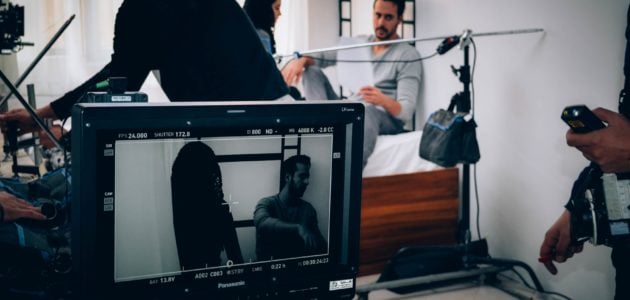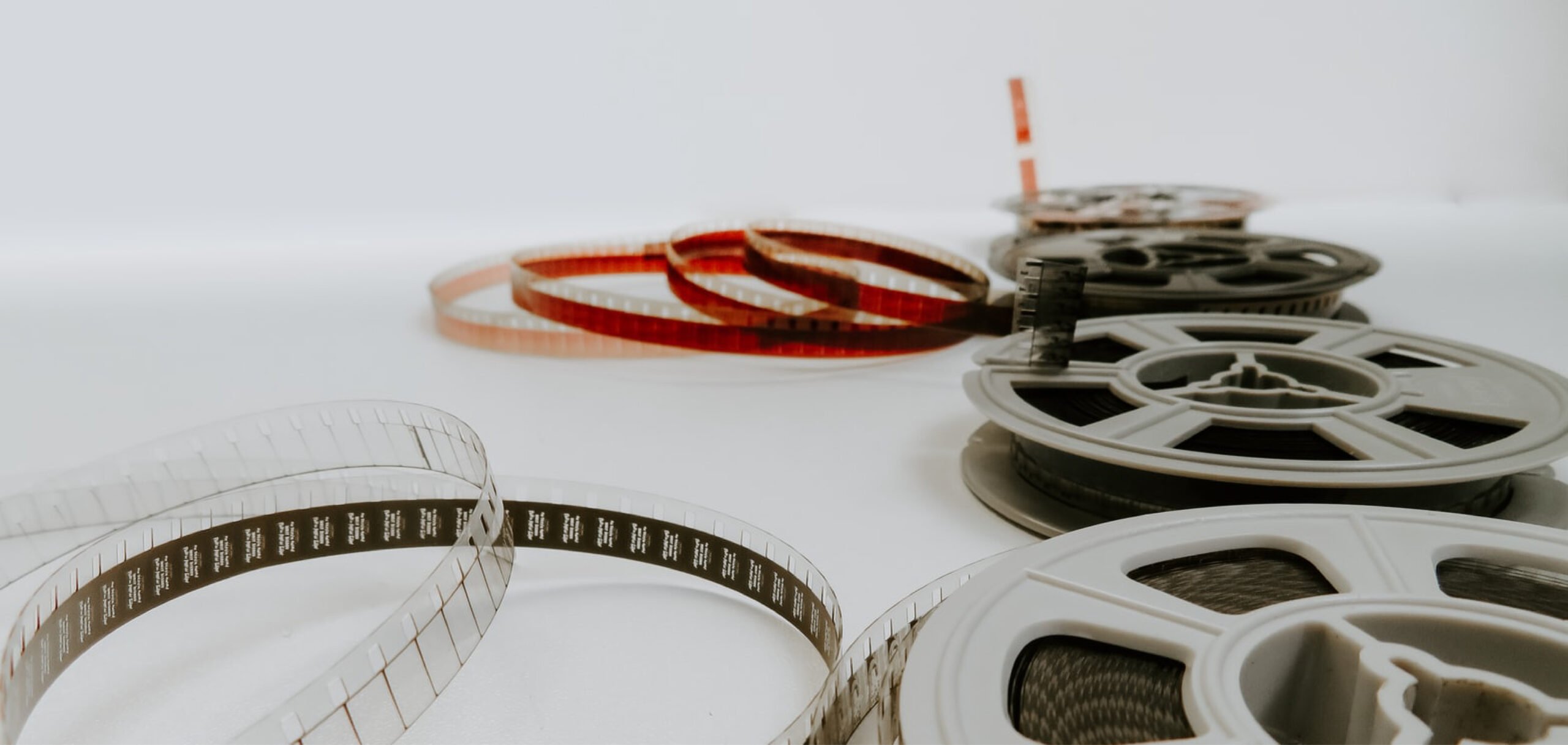
What Does a Film Director Do?
A film director is the person in charge of all artistic and dramatic facets of a feature production. They help plan and budget, cast actors, recruit crew members, and liaise with department heads to maintain a consistency of artistic vision. Once on set, they work primarily with actors and the director of photography (DOP) to ensure that the story is told in its best possible form, without sacrificing clarity, or spending too much money, or blowing the deadline (due date). After filming wraps, they further refine the film in post-production by overseeing the editing, sitting across sound and music choices, and supervising visual effects.
Despite being a prominent position in the entertainment industry—the role has steadily risen in the esteem of the public and elevated many directors to celebrity status—it is easy to forget how many different hats a director will wear in a production, or how long they may spend on a particular film. This article provides a breakdown of the key elements of their role; however, because of the unique demands of each production and working process of each director, their actual list of responsibilities can vary.
Evolution of the Role
Directors have not always enjoyed such prominence in popular culture. For the first forty-odd years of cinema history, their role was seen as more of a technical undertaking—not without artistic merit, but more akin to how we might think of cinematographers in the contemporary landscape. Many of the early famous directors such as Charlie Chaplin were known to audiences as performers who stepped behind the camera. And despite their immense popularity, they all struggled with Hollywood’s studio system for production autonomy and artistic control.
As film-goers came to know and love the work of particular directors, certain names in the forties and fifties started to gain prominence; Hawks, Welles, Hitchcock, Wilder, and Sturges all began to define the director-as-brand image: one could buy a ticket to any of their films and understand, by way of their name on the poster, what kind of show they were in for. The sixties introduced ‘auteur theory‘ via critics and filmmakers in France, which established the director as the author of the film and the film itself a representation not of a studio’s money or production slate, but their own artistic vision.
This theory has generally carried through to today. It was idolised by the ‘movie brats’ generation of directors like Scorsese, Lucas and Spielberg who entered the game post-studio system, and was neatly compatible with the indie film movement that was birthed in the eighties, exploded in the nineties, and hums along as its own industry today. Directors have always been iconoclasts: they fight against studios, systems and money men to tell their stories. And yet, most are striving for the kind of safety and status that can only come from a firm entrenchment in the film industry.
Pre-Production
Funding
While the funding of a film is generally the business of a producer, or studio, a director may find themselves attached at the conceptual stage of a production to help sell the project to investors. A director’s attachment may be name-only, or it may see them prepping material such as treatments or visual material to illustrate how the film will look and feel. Projects come and go, and directors may be attached to several projects at the funding stage that never see the light of day.
Logistics
When a film is green-lit, the director will work with the producer, assistant director (1st AD) and other production staff to plan out each aspect of the film: they’ll gather the required crew, choose filming locations and coordinate a shooting schedule. They’ll work to a budget and deadline, generally set by the studio, that adheres to a strict timeline of when the film should be released to audiences. As the director’s work on-set will often see them fighting these very things in order to capture the right performance or perfect shot, it is vital that they have a nuanced understanding of what things will cost and how much time they will take long before they step on set.
Casting
Generally, directors will work with casting directors to find a select group of actors to see for each role. Most directors prefer in-person auditions, although some have preferred self-tapes even before their current popularity in the industry (James Cameron was an avid supporter of the process as far back as Avatar). For directors with more career clout, they may approach actors directly—either those they know or have worked with in the past.
Design
A director must make sure that each aspect of production fits together in total harmony; to do this, they work with department heads across costume, set, VFX, and production design to ensure that all the separate elements of the film are telling the same story. While we tend to think of a film as a director’s singular ‘vision’ (auteur theory doing its work again), the sheer scale of a feature film means they actually collaborate with countless other artists to help build a consistent design language
Script Analysis
Perhaps the most important directorial job in pre-production: the director pours over the script and analyses every page/scene/line/word. This will help them realise the story (and filter their interpretation to the various department heads), break down the script for budgeting and shooting, and prepare them for directing actors. Even if a director is working from their own material, the same process applies; the ‘writer’ hat will generally be hung up as they begin to read the words they’ve written from a production standpoint.
Generally, this preparation culminates in storyboards and shot-lists prepared by the 1st AD who will also coordinate the call-sheets that tell everybody what they’re filming and when. However some directors, like Steven Spielberg, eschew the storyboarding process, preferring to step on set and find their shots in the moment.
Production
Directing Actors
On set, the director’s primary interactions will be with the actors. They will rehearse and block the actors’ movements for camera/lighting departments, help shape performances, build believable character arcs, and define the objectives and significance of each scene. As filming is generally done out of order (based on budget, location availability, and other external factors), they need to keep the entire scope of the project in their heads; all of the different pieces will need to fit together when it comes to assembling footage in the editing room. Sometimes their role is supported by a dramaturg, who will work with actors to contextualise the day’s scenes through close script analysis.
Directing Camera
The director will collaborate with the director of photography (DOP) to plan out each shot and ensure that it is properly captured. Despite what most people think about the role, the director does not directly operate the camera or yell ‘action’; most of their time will actually be spent behind a monitor, watching the scene play out and making adjustments by speaking to the 1st AD.
Working With the 1st AD
The 1st AD is the liaison between the director and the rest of the crew. They will help convey the director’s wishes, work with department heads to convey the necessary information, and ensure that the production is not falling behind schedule. If somebody needs to speak to the director or ask them something, they will go to the 1st AD. The role is vital on any large production, as it keeps as many logistical worries out of the director’s head as possible. This allows them to focus on the frame and support the actors.
Post-Production
Editing
In post-, the director will play an integral role in the editing of the film. While they do not physically edit the film themselves, they will sit with the editor and look over each scene to make sure it is clear and consistent with their larger artistic vision. Some directors take a more hands-on role with editing, and others are happy to let their editors work autonomously—especially if they are a long-time collaborator (editor Thelma Schoonmaker has been working with director Martin Scorsese for over fifty years).
Sometimes, studio pressure can force directors to re-edit their films. While still a common practice for greener filmmakers, more established directors may opt to push back and fight for creative control. As directors gained greater public recognition in the latter half of the 20th century, we saw the emergence of the ‘director’s cut’: a re-release of an older film with scenes either added or removed to better serve the original artistic vision.
Sound
Just as they work with editors, directors will oversee sound design—including score composition, music coordination and sometimes foley. ADR (automated dialogue replacement) is a common part of post-production in which actors will re-record dialogue to sync with already-shot footage. This is commonly done because sound quality captured when shooting can vary, but it also gives directors the chance to tweak and tone performances after the fact.
VFX
Supervising visual effects production is becoming an increasingly important part of a film director’s process. It can range from approving a particular shot, or overseeing complex action sequences where the majority of the frame is composited or animated. As with other aspects of production, some directors favour practical effects over computer-generated imagery; however, the standard practice has shifted to the latter for reasons of budget, logistics, and the opportunity for increased creative control.
Conclusion
Film directors are leaders, visionaries, artists, and logicians. They work in a system haunted by the bottom line, entrenched in tradition, and one that historically responds so poorly to changing tastes it seems as though every decade has heralded its cataclysmic end. Perhaps it is for this reason that we regard them as inherently Romantic figures. Where most see an endless parade of planning headaches, budget constraints, and artistic compromise, film directors see the opportunity to say something and be heard. Few voices ring as loudly or as true.




Leave a Reply